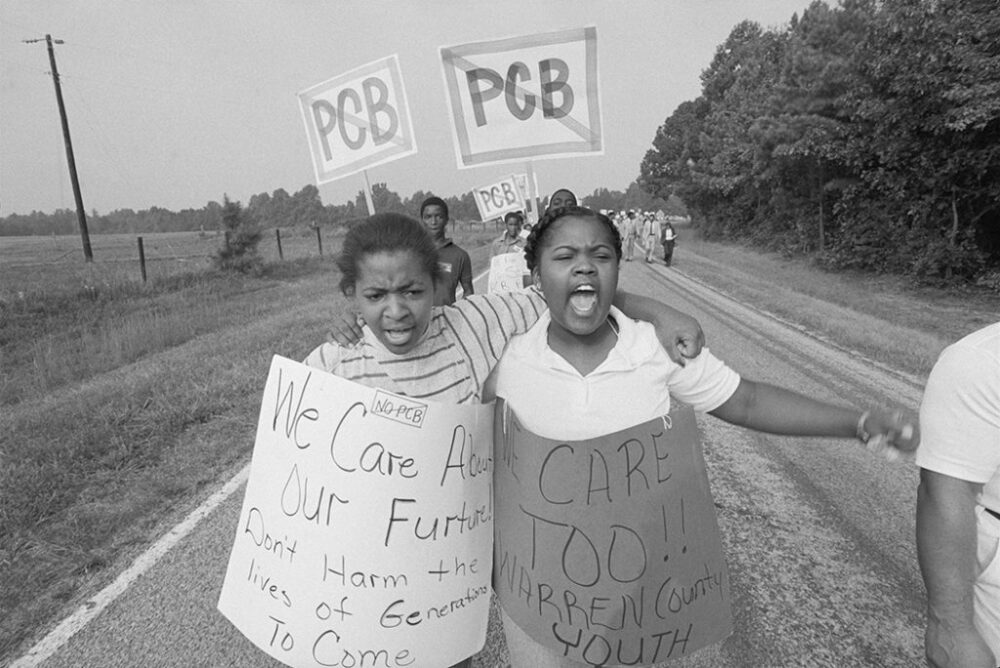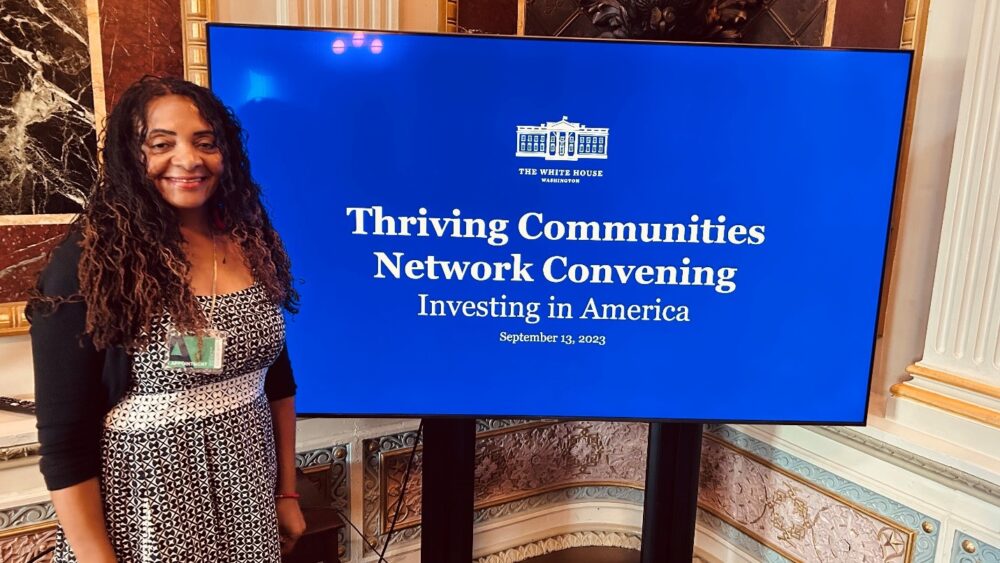We have much more to do and your continued support is needed now more than ever.
Native American Heritage is More Than Just a Month

Indigenous Peoples had no choice but to be resilient, and shouldn’t have to be. Indigenous Peoples shouldn’t have to constantly fight to have a seat at the table, to have their voices heard, and to have their heritage, expertise and knowledge given the respect it deserves. Yet it continues to happen every day, it’s nothing new.
November is Native American Heritage Month and while the heritage of Indigenous Peoples is more than just a month, this is a time to honor the histories, cultures and influence of Indigenous Peoples across the country. The same people who are working tirelessly to protect wildlife while fighting for sovereignty, environmental justice, and the protection of sacred and culturally significant lands and waters.
The significance of this month is dichotomous. On one hand, we celebrate the Indigenous Peoples that have been the stewards of this land since time immemorial. On the other hand, November is often synonymous with Thanksgiving and holds a painful reminder of the colonial oppression and violence inflicted by European colonizers.
It’s critical to acknowledge that it is our responsibility to honor and uplift Indigenous Peoples every month, not just Native American Heritage Month. Just as it is important to recognize that seasonal fall harvests existed long before Thanksgiving was established in the national mainstream.
You can learn more about the perspectives of Indigenous Peoples on Thanksgiving from Indigenous Action and the National Museum of the American Indian.
At the National Wildlife Federation, we support reframing the narrative about this month and time of year to include the tremendous knowledge and effort Indigenous Peoples bring to environmental conservation and justice.
Learn from Indigenous organizations, those directly in the field, as you immerse yourself in the issues and successes described below that are happening across the country.
Baaj Nwaavjo I’tah Kukveni (Grand Canyon National Monument)

The Grand Canyon Tribal Coalition fought for the protection of their homeland, calling on President Biden to establish the Baaj Nwaavjo I’tah Kukveni – Ancestral Footprints of the Grand Canyon National Monument in Arizona. They succeeded in protecting nearly 1-million acres of land, safeguarding wildlife populations and water supplies from harmful uranium mining while preserving their cultural heritage.
“We trace our ancestry here, and many of our ancestors are buried here. We have stewarded these lands since time immemorial and we are still here. The Grand Canyon region is sacred to each of us; it is a place where we see and understand our history. It is vital to our future as an eternal home and source of spiritual sustenance. Although many of our people were unjustly removed from these lands, our connections to this place and our responsibility to protect it remains strong. Many of us have worked for decades to safeguard our Grand Canyon homelands from desecration at the hands of extractive, harmful operations like uranium mining, and today, with the designation of Baaj Nwaavjo I’tah Kukveni – Ancestral Footprints of the Grand Canyon National Monument, we see these lands permanently protected at last.” – Grand Canyon Tribal Coalition
Peehee Mu’huh (Thacker Pass) Lithium Mine

An open-pit lithium mine project broke ground in Nevada earlier this year on sacred Indigenous land called Peehee Mu’huh (Thacker Pass). The mine jeopardizes nearly 100 significant Indigenous sites across more than 7,000 acres in the McDermitt Caldera region. The mine would also cut off access to foods, medicines, and hunting grounds that are important to Indigenous communities.
Atsa Koodakuh wyh Nuwu (People of Red Mountain) are a committee of traditional knowledge keepers and descendants of the Fort McDermitt Paiute, Shoshone, and Bannock Tribes and others, formed to raise awareness about this threat to Peehee Mu’huh.
“We are working with our tribal government and other partners in solidarity with protecting Peehee Mu’huh as a sacred place. This place is essential to the survival of our traditions because our traditions are directly tied to the land. Each season is a time to hunt animals and gather plants, food, and medicines. Peehee Mu’huh holds many first foods, medicines, and hunting grounds for our people in the past and present. All this Indigenous knowledge, the mine endangers.” – People of Red Mountain
Removing Ela Dam

The Eastern Band of Cherokee Indians (EBCI) formed a coalition with American Rivers and federal, state, public, private, and non-profit organizations to remove the Ela dam in North Carolina and restore the land and Oconaluftee River to its natural state. The land will eventually be returned to the EBCI, the only federally recognized Tribe in North Carolina.
Blocking the Oconaluftee River impacts the aquatic habitats that many native fish, mussels, birds, and other wildlife require to thrive in their natural environment. The removal of Ela dam will result in a cultural reconnection of the Oconaluftee River to the Cherokee people and the Qualla Boundary along with untold benefits for wildlife and the ecosystem.
Tribal Water Rights and Access to Clean Water

One of the most significant challenges facing Indigenous Peoples today is centered around a vital topic: Water. While water is a human right, there are many Indigenous Peoples who are fighting for the equitable access to, and management of, our world’s most vital resource. Nearly 50% of homes in Tribal communities are without access to clean water, an injustice that has occurred for decades.
On top of that, many federally recognized Tribes in the Colorado River Basin have unfulfilled water rights and yet are still omitted from key management decisions for the river. There are countless other examples of Indigenous Peoples’ who lack access to clean water or are fighting to uphold their sovereignty in water management.
“Sympathy alone cannot close the water gap experienced in Indian Country. Instead, the federal government – particularly Congress – must take action, and in fact is obligated to do so under its treaty and trust responsibilities to tribes. Land without water is not viable and cannot be a homeland. Water is also necessary for health. Death is inevitable without water. That is not a doomsday prophecy, it is reality.” – Heather Tanana, lead of the Universal Access to Clean Water for Tribal Communities Initiative
Learn more about Tribal water initiatives:
You can stand up for Tribal access to clean water by taking action here.
Reestablishing Buffalo Herds on Tribal Lands

The InterTribal Buffalo Council (ITBC) is a collection of 80 tribes in 20 different states that facilitates the management of more than 20,000 buffalo. Members manage more than 32 million acres of Tribal lands and have restored buffalo to nearly 1 million of those acres. ITBC has played an integral role in lobbying and advocating for the introduction of the Indian Buffalo Management Act.
The bill requires the Interior Department to enter into contracts, award grants and provide technical assistance to Tribes and Tribal organizations for buffalo restoration or management. It also requires consultation with Tribal representatives on initiatives that affect buffalo or buffalo habitat.
“Buffalo are as ubiquitous to the land as the Indigenous peoples that have resided here for thousands of years. The species is necessary to not only heal the land but to revive and protect our culture and maintain connection to our ancestral heritage. The Indian Buffalo Management Act not only acknowledges, but celebrates the intergenerational knowledge we hold in caring for this species and provides resources to ensure we can continue working with Tribal, federal and conservation partners to establish prolific populations of buffalo across the country.” – Jason Baldes, vice president of the InterTribal Buffalo Council and senior Tribal buffalo program manager for the National Wildlife Federation.
Tribal Wildlife Corridors

Many migrating species hold cultural significance for Tribal communities and Tribal lands are often vital for the movement of these animals. Tribes and Indigenous Organizations, like the Native American Fish and Wildlife Society, are working to proactively manage improved habitat and conserved wildlife migration corridors.
The Pueblo of Santa Ana Department of Natural Resources was awarded funding through the Tribal Wildlife Grants Program to conduct remote camera surveys of high use roadways that intersect movement corridors and high use habitat for multiple big-game species. Results will further assist the Pueblo of Santa Ana and the New Mexico Department of Game and Fish to effectively recommend and implement projects that improve habitat connectivity and motorist safety.
The Fight to Save Hawai’i’s Birds
According to US Fish and Wildlife, 10 bird species were delisted from the endangered species list because they were determined to be extinct— eight of those were birds native to Hawaii. The Conservation Council for Hawai’i has been a leading voice on Capitol Hill for national issues affecting Hawai‘i, including the fight to save endemic bird species and preserve Hawaiian culture with events like the Hawai’i Island Festival of Birds.
“Many of Hawai’i’s birds are endemic – meaning they’re found nowhere else on earth. These birds are native to our islands and once they’re gone, a bit of Hawaiian culture dies with them. Endemic birds were incorporated into everyday life. They are depicted in traditional Hawaiian songs, chants, and hula, we named our children after our favorite birds, and named special places where specific birds were known to frequent. Master craftspeople utilized the specific feathers from specific birds in making exquisite capes, helmets, royal standards, lei’s and in other decorative pieces. Once these birds are endangered or extinct, a whole culture involving them goes extinct as well. These rare birds are disappearing before our eyes because of climate change, invasive species/predators, and loss of habitat. It is our kuleana (responsibility) to kōkua (help) our native birds and other native species that are on the brink of extinction by using every tool available to us to fight these threats.” – Jonee Peters, Executive Director for Conservation Council for Hawai’i

Other Ways to Celebrate Native American Heritage Month
- Attend an event near you, become an active participant
- Take a free course to learn about Free, Prior, and Informed Consent
- Donate to Indigenous organizations like Indigenous Women’s Leadership Network (IWLN), Pueblo Action Alliance, Native Organizers Alliance, Honor Water and more.
- Support and buy from Indigenous artisans
- Do your own research, learn about topics such as:
- Missing and Murdered Indigenous, Women, Two-Spirit Individuals and Relatives
- The looming threats of Line 3 and Line 5 pipelines to Tribal land and treaty rights
- The Dakota Access Pipeline
- The Apache-Stronghold’s fight for Oak Flat
- Hawai’i’s fight for sovereignty and Hawai’i Island Festival of Birds





















